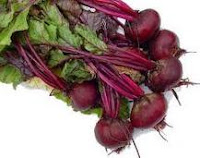The ash tree is the fourth most common tree in Britain and can sometimes be the most prevalent species in a wood. It grows across Europe from the Arctic Circle to Turkey and also grows in the Himalayas. It is Yggdrasil of Scandinavian mythology, the Tree of the World which has its roots in Hell and touches Heaven, and is also known as Tree of Rebirth and Healing. It was one of the three sacred trees of the Druids, along with the oak and the hawthorn. Despite the similarity of names, the ash tree is a relative of the olive tree, but not of the Mountain ash or rowan.
The fruit of the ash tree comes in the form of seeds which are encased and hang from the trees; these are called keys in the UK and children often call them aeroplanes because they fly well on a breeze. The bark is pale grey with lattice-like ridges and fissures. When cut it exudes a sap which the ancient Greeks called “meli” or honey as it is sweet, being made up of natural sugars. This was sold for medicinal purposes under the name of Manna until the start of the 20th century. (This species of ash tree is Fraxinus ornus and grows on mountains in Greece.) In times past in Britain, newborn babies were given a spoonful of this substance and after that they and the ash tree from which the sap came were thought to be related. The health of the ash tree and the human relative were thought to be identical, so the person whose tree it was would protect it so that no harm came to him or her.
 |
| Ash keys |
There have been many medicinal uses of the ash tree, and some involved using the whole tree; for example a child with rickets or a broken limb would be passed through a cloven tree, naked, in a ritual ceremony, to heal the affliction. Ash trees seem prone to lightning strikes, so trees can be found struck in two. They were thought to be good to plant outside houses to protect them from lightning. The tree can live for over a hundred years and although they usually have a girth of 5 to 6 feet, can be as big as 20 feet in diameter. They are usually between 30 and 50 feet tall, but sometimes grow to around 70 or 90 feet. Some have achieved a dizzying 135 feet. They kill most vegetation growing under them though, rather as does the banyan tree among others.
 |
| Ash flower |
 |
| Ash keys |
Gerard says this of the ash: -
“The juice of the leaves or the leaves themselves being applied or taken with wine cure the bitings of vipers, as Dioscorides saith ‘The leaves of this tree are of so greate virtue against serpents so that they dare not so much as touch the morning and evening shadows of the tree, but shun them afar off as Pliny reports.’”
The Physicians of Myddfai had this recipe to cure deafness:
“Take a ram’s urine, and eel’s bile and the juice of ash, expressing the same into the ear and about the tooth. The actual cautery should be applied behind the ear and angle of the jaw, a nut being inserted therein. This is a good plan.”
That, of course is for you to decide!
Traditionally the ash tree’s bark, roots and leaves have been used to treat cancerous growths that are external, as pain killers, anti-inflammatory for gout, rheumatism and arthritis, and to get rid of intestinal worms.
 Modern medical research has shown that the seed extract can be used in the future to help in the treatment of diabetes, as well as to regulate uric acid in the blood so it can be used in the treatment of gout. Fraxtin, a bioflavonoid found in the tree has strong antioxidant properties, and a secoiridoid glycoside in the tree, Excelsioside, has exhibited free radical scavenging activities, so will combat the growth of cancer cells. It also contains quercetin, another bioflavonoid with antioxidant properties, and oleuropein which is also present in olive oil, which has anti-inflammatory properties, is cardio-protective and also has anti-cancer, antimicrobial anti-artherogenic, and antiviral qualities.
Modern medical research has shown that the seed extract can be used in the future to help in the treatment of diabetes, as well as to regulate uric acid in the blood so it can be used in the treatment of gout. Fraxtin, a bioflavonoid found in the tree has strong antioxidant properties, and a secoiridoid glycoside in the tree, Excelsioside, has exhibited free radical scavenging activities, so will combat the growth of cancer cells. It also contains quercetin, another bioflavonoid with antioxidant properties, and oleuropein which is also present in olive oil, which has anti-inflammatory properties, is cardio-protective and also has anti-cancer, antimicrobial anti-artherogenic, and antiviral qualities. There is an old saying about the oak and the ash trees:
“Oak before Ash, in for a splash
Ash before Oak, in for a soak,”
This means that if the oak flowers before the ash tree it won’t be a wet summer, but if the ash flowers before the oak then it will be wet.
There are several songs about the ash tree, including the traditional Welsh song, The Ash Grove, (Llwyn Onnan) which is about a grieving lover roaming the ash grove where his love is buried. The first verse goes like this:
When twilight is fading I pensively rove,
Or at the bright noontide in solitude wander
Amid the dark shade of the lonely ash grove.”
Then there is the more cheerful, although still nostalgic traditional song,
“The Oak and the Ash and the Ivy tree
Oh, they flourished best at hame in the north countrie.”
It is also said that you will have prophetic or psychic dreams if you sleep with a handful of Ash leaves under your pillow.













































